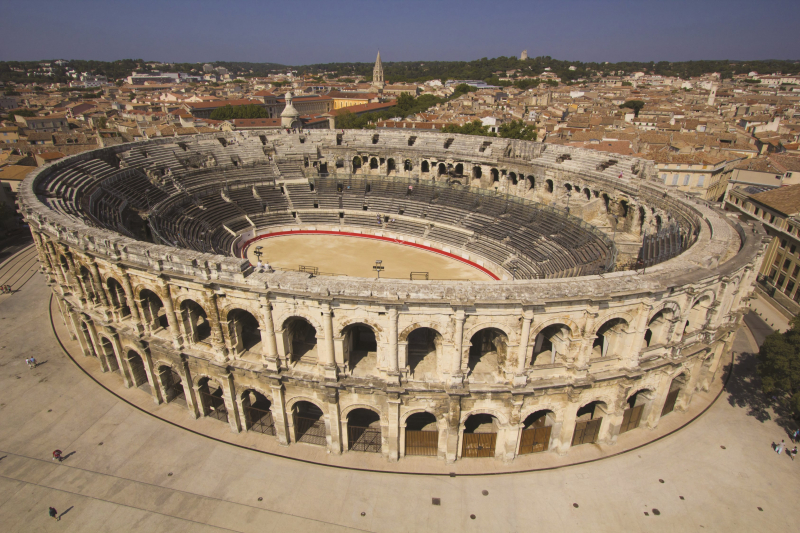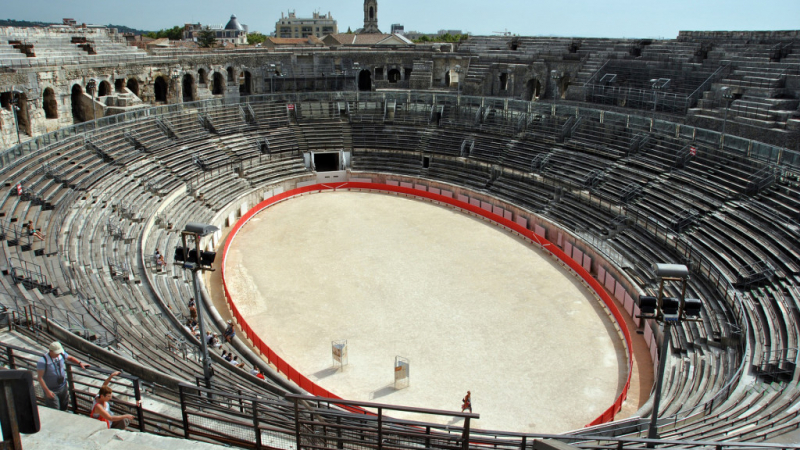Arena Of Nîmes
The ninth most exemplary structure of ancient Roman of architecture belongs to Arena of Nîmes. The Colosseum of Rome was constructed shortly after the Arena of Nîmes, also known as the Nimes Amphitheater. It is currently one of the best-preserved Roman amphitheaters in existence. The arena measures 223 feet by 125 feet, while the amphitheater is 436 feet long and 328 feet broad. The building has two floors and 60 arcades on its 69-foot-long outside face. The arena could hold 24,000 spectators in Roman times. It has 34 terrace levels that were further separated into four separate zones.
Nîmes started to build and retract its defenses in the fourth century. The amphitheater's arcades were closed off, and the monument played a crucial role in Nîmes' defense. The town's populace sought shelter inside the walled castle that had replaced the ancient amphitheater. Despite numerous sieges, the amphitheater has proven to be an extremely powerful defense. By seizing possession of Nîmes in 725, Arabs from Spain completely destroyed the Visigoth empire. They were later pursued by the Franks, who eventually settled in Nîmes, thirty years later. The city, nevertheless, was now only a faint remnant of its previous Roman grandeur.
The emperor Augustus oversaw the construction of this building. However, the edifice was finished by Roman citizens and the gladiators who took part in the battle. As a result, it served as a theater for general or public events. Two bullfights are currently held at the Arena of Nîmes each year as part of the Feria de Nimes celebration. Additionally, the venue hosts several cultural concerts as well as other public events like "The Great Roman Games."












